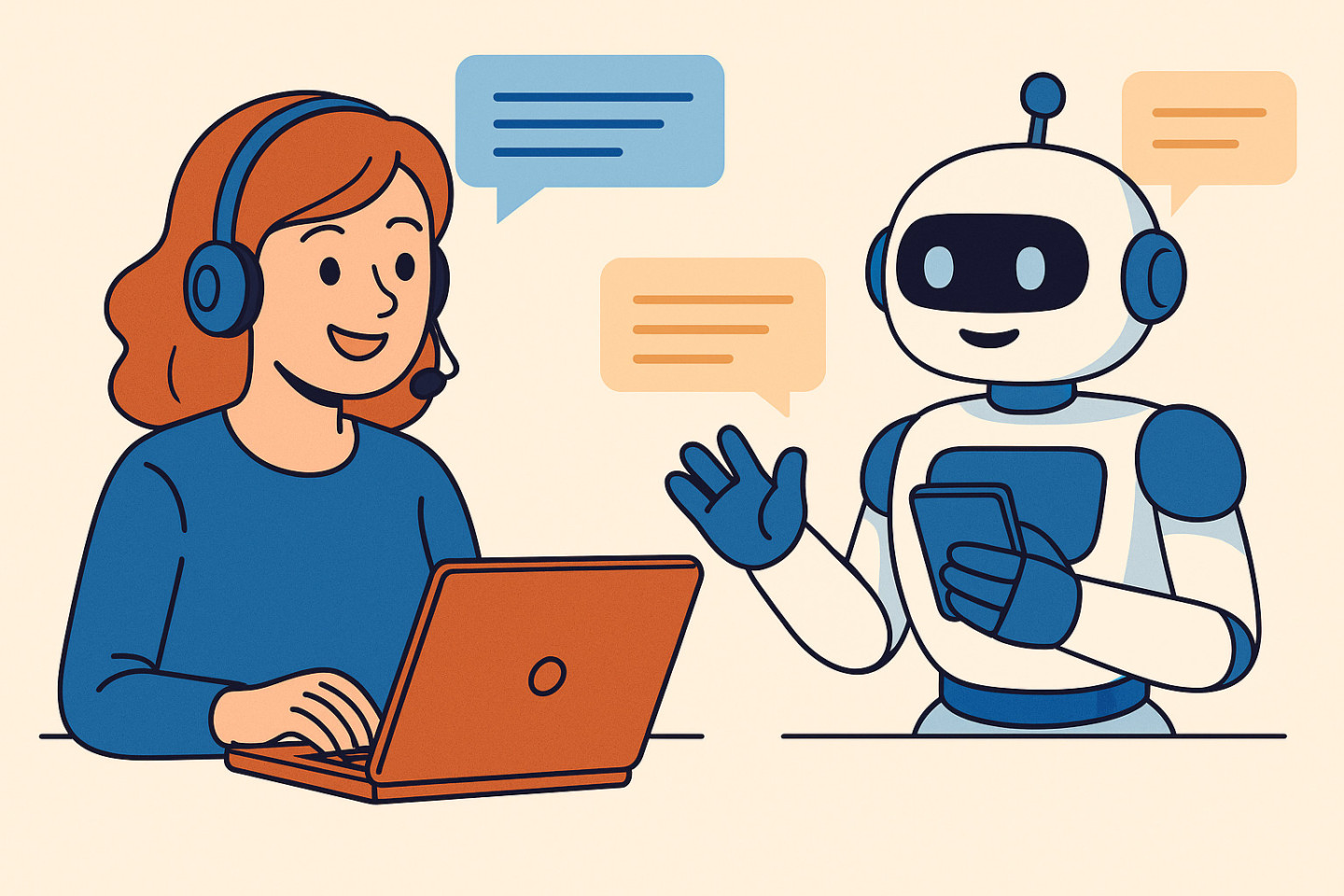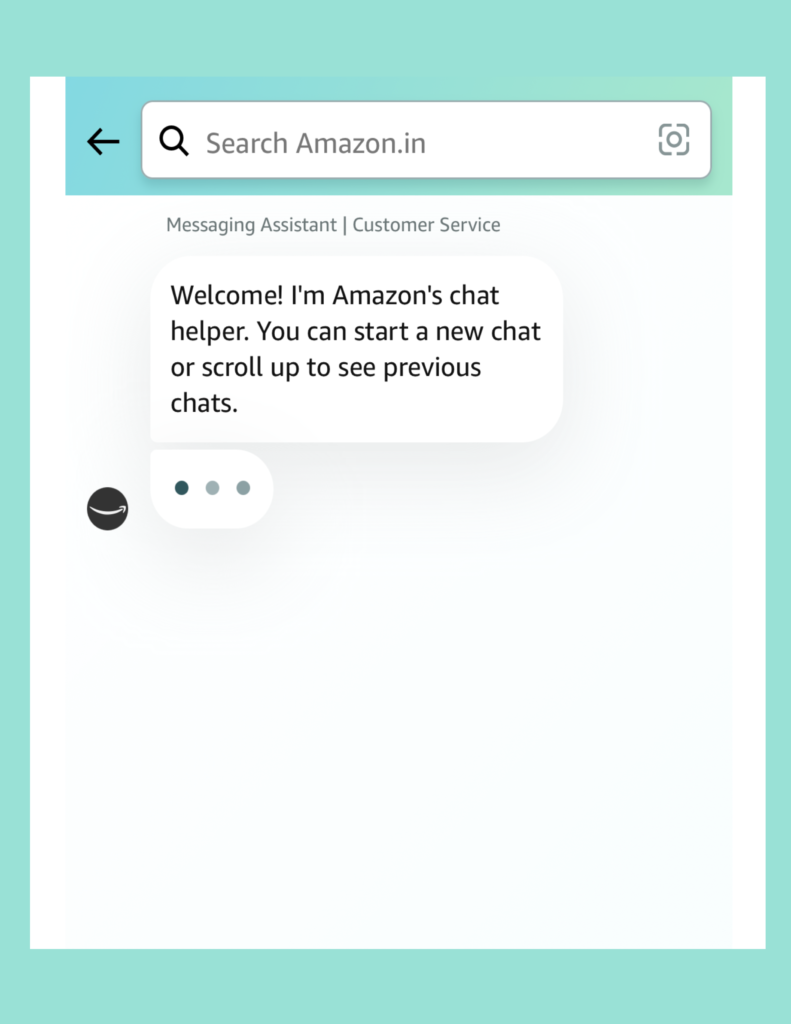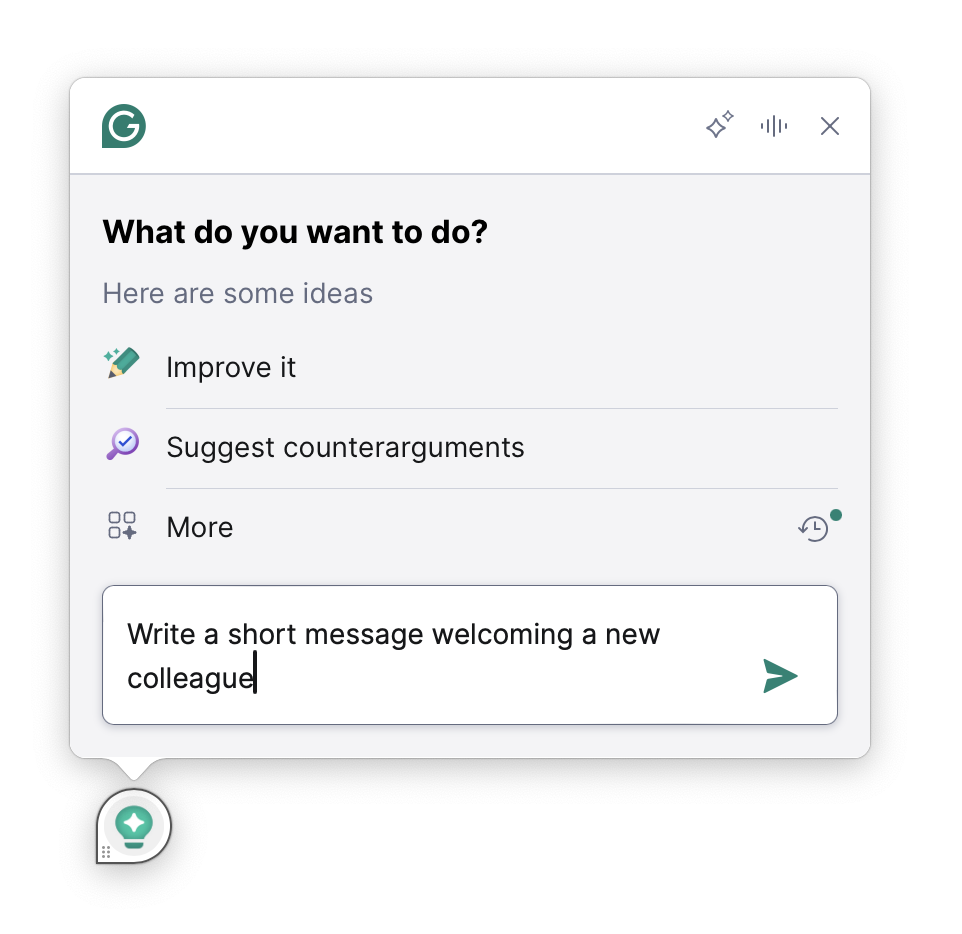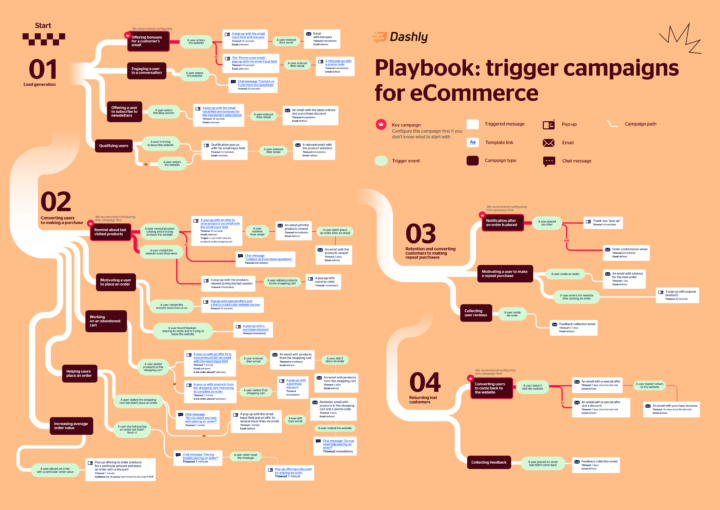Top companies that use AI generated customer support: How businesses are using AI to improve customer service and support

AI is no longer just a trend. It’s changing how companies handle customer service — from the first “hello” in live chat to complex problem-solving.
Why does it matter? Because today’s customers expect instant help. And teams are under pressure to deliver. That’s where AI steps in — handling repetitive questions, improving customer satisfaction, and making support scalable.
In this article, we’ll break down how top companies that use AI generated customer support actually work. You’ll see real examples, across different industries. If you’re leading a customer service or support team, this guide is for you.
Why customer service teams turn to AI today
Many support teams face a common challenge: limited time, unlimited tickets. Repetitive requests. Burnout. Hiring freezes. It’s not sustainable.
That’s why AI has become a game-changer.
The rise of automation in support
Automation isn’t just about cutting costs, it’s about delivering customer service at scale without sacrificing quality.
Drivers of AI adoption in customer service
Let’s break down what’s pushing businesses toward AI tools:
- Growing demand for 24/7 support services
- High agent turnover in traditional call centers
- Rising customer expectations for speed and accuracy
- Complex tech stacks slowing teams down
Revenue growth from improved customer experience
When support services are powered by AI, it’s not just customers who benefit. Faster replies → higher satisfaction → more renewals → more revenue. It’s a clear path from automation to business growth.
Customer satisfaction improvement
Customers love fast answers. AI reduces wait times, which means fewer complaints and higher CSAT scores.
Cost savings in call center operations
AI handles high ticket volume without the need to scale headcount. That lowers support costs over time.
Scalability for support services
Teams can serve more users without more agents. That’s the kind of efficiency SaaS and digital companies need.
Agent generative capabilities
Modern AI isn’t static. Generative AI-powered tools can draft replies, summarize tickets, and even personalize responses, freeing up human agents for edge cases.
How AI transforms customer expectations and support
Before AI, speed was a nice-to-have. Now, it’s a baseline. Modern customers expect instant replies and consistent answers across all channels.
That expectation is reshaping how support teams operate. It’s no longer just about being helpful. It’s about being available, fast, and personal — all at once.
AI plays a key role here. It enables real-time customer service without adding pressure to your team. Whether it’s a billing question at 11 p.m. or a basic setup issue, AI agents are always on. That changes what customers expect from every service interaction.
But availability alone isn’t enough. The experience needs to feel human. Generative AI tools help personalize responses, using context from past chats, behavior, or plan type, so customers don’t feel like they’re talking to a robot.
The result?
- Faster replies
- Less frustration
- Higher customer satisfaction
- More time for agents to handle complex issues
For digital companies, especially in SaaS and e-commerce, this kind of scalable support is no longer optional. It’s expected. AI helps make it possible.
The business impact of using AI in customer service
Let’s be honest, support isn’t just about solving problems. It’s a business driver. And when done right, AI-powered customer service can impact the bottom line in ways that go far beyond response time.
First, there’s efficiency. With AI handling repetitive queries, teams save time. Instead of answering the same shipping or password questions all day, agents can focus on complex issues. That shift improves team morale and helps companies scale without growing headcount.
Second, AI improves consistency. Human agents have off days. AI doesn’t. It delivers the same tone, structure, and policy-adherent response every time. That creates trust, especially for industries where accuracy is critical, like fintech or e-learning.
Third, speed. Customers don’t like to wait. Faster replies mean higher customer satisfaction, lower churn, and better reviews. That’s not just a support metric, it’s a growth lever.
And finally, cost. Running a full customer service team 24/7 is expensive. AI makes around-the-clock support possible without the payroll burden. For digital companies and global teams, that’s a serious win.
In short, using AI in customer support reduces costs, improves retention, and frees up your team to do their best work.
It’s not about replacing humans. It’s about letting them shine where they matter most.
List of top companies that use AI generated customer support
Across industries, more and more companies are turning to AI to upgrade their customer support operations. From tech to travel, businesses are automating the repetitive while keeping the personal.
Here are four standout examples of companies that use AI generated customer support successfully:
- Amazon — The e-commerce giant uses AI in its support workflows to automate order tracking, refunds, and delivery queries. Their virtual assistant handles high-volume questions before routing to a human only if needed.
- Revolut — This digital banking platform relies on AI customer service to offer 24/7 financial assistance. Its chatbot resolves typical account issues like password resets or card limits in seconds.
- Lufthansa — The airline’s AI-powered support services help travelers manage bookings, rebook flights, and receive real-time updates — especially useful during high-traffic seasons.
- Grammarly — With millions of global users, Grammarly uses AI to scale customer inquiries related to billing, subscriptions, and app issues without compromising on tone or clarity.
Each of these companies uses automation to reduce pressure on their support teams, shorten resolution time, and increase customer happiness. All while lowering operational costs.
The results? More efficient customer service, happier teams, and higher customer satisfaction without losing the human touch.
How Dashly’s AI support agent helps teams scale service
Not every business has a massive support team — and even the big ones get overloaded. That’s why many companies are turning to AI to scale their customer service without scaling costs.
Dashly’s AI support agent is built for this exact purpose. It handles up to 40% of customer requests automatically — answering repetitive questions, routing complex issues to live agents, and reducing time to resolution.
Instead of forcing your team to respond manually to every “How do I reset my password?” type of question, Dashly takes over the boring stuff. That means agents get more time for edge cases — and customers get faster replies.
Dashly works across live chat and messengers, integrating seamlessly into existing workflows. The result?
- More efficient support
- Shorter response times
- Better customer satisfaction
- Lower burnout for agents
For digital companies in SaaS, EdTech, and beyond, this kind of automation is a game changer. It’s not just about speed, it’s about making customer support smarter, more structured, and way more scalable.
Here an example. Dashly’s client uses AI support agent to resolve common queries:

You can check out the whole story here.
And since the tool is powered by generative AI, it doesn’t rely on pre-set scripts alone. It can generate personalized, context-aware answers that feel natural to the user.
Dashly gives your support team superpowers — without needing to hire 10 more people.
Amazon’s use of AI in customer service and support
Amazon has long been a pioneer in using technology to improve customer service. And AI is a big part of that strategy.
When customers ask, “Where’s my package?” or “How do I return this item?”, they’re not always routed to a human. Instead, Amazon uses intelligent automation to solve these requests instantly. Its virtual assistant answers questions based on user behavior, order history, and past interactions — all without an agent stepping in.
This saves time on both ends. Customers get quick solutions. Support teams avoid repetitive work.
But Amazon’s use of AI in support goes even deeper. Their systems monitor tone and sentiment in chat messages to detect frustration. If needed, the conversation escalates to a human but only when it truly matters.
That blend of automation and empathy is where Amazon sets the bar. It’s not about replacing people. It’s about offering service that’s efficient, responsive, and scalable.
With millions of users and constant ticket volume, AI allows Amazon to maintain high customer satisfaction while keeping operating costs in check.
For any company thinking about using AI, this is a clear benchmark: automation that supports both business goals and real people.
How Shopify uses AI to support merchants

Shopify powers millions of online stores and behind the scenes, AI helps keep customer service running smoothly for merchants around the world.
Their support experience includes chatbots trained to handle frequent questions about payments, shipping, settings, and apps. These bots are available 24/7 and solve common issues without delay. For merchants dealing with time-sensitive sales or inventory problems, that speed makes a real difference.
But it’s not just about automation. Shopify’s support tools use AI to suggest resources, documentation, or next steps based on the user’s behavior. If a merchant gets stuck on a feature, the system can surface help articles or onboarding tips before they even ask.
That kind of proactive customer support improves retention. When merchants feel supported, they stick with the platform longer and grow their business faster.
And if the AI can’t solve the issue? The conversation is handed off to a human agent, complete with full context. That way, no one wastes time repeating themselves.
Shopify’s blend of self-service and smart escalation shows how companies can use AI to offer efficient, scalable support while still keeping things personal.
Revolut and the power of generative AI in live chat
Revolut is one of the most prominent digital companies using automation to scale global support — and live chat is where their AI really shines.
Real-time financial support with AI
Revolut’s chatbot helps users manage everyday banking tasks — from freezing cards to reviewing transactions — all within seconds.
This isn’t just a reactive system. It’s designed to interpret intent, understand urgency, and respond appropriately, even across languages and regions.
The real value shows up during high-traffic hours. Instead of users waiting in line for a live agent, the AI steps in to solve problems quickly — reducing pressure on Revolut’s team and keeping customer satisfaction high.
The role of generative AI in chat automation
What sets Revolut apart is its use of generative AI, not just rule-based scripts. The chatbot doesn’t just recognize keywords — it generates helpful replies in natural language, adapting tone and structure based on the query.
For example, if a user asks, “Why did I get charged twice?”, the AI pulls up the transaction, checks for duplicates, and responds with a full explanation — often without a human involved.
This kind of agent generative capability is what makes Revolut’s support services feel seamless, personal, and efficient — even at scale.
Grammarly’s AI-powered service for global customers
Grammarly supports millions of users across languages, devices, and time zones — and they rely on AI to keep their customer support fast and scalable.
When a user needs help with billing, account access, or technical issues, Grammarly’s virtual assistant is the first line of contact. It handles common requests instantly, allowing agents to focus on complex questions or bugs.
This improves response time without compromising on tone. Since Grammarly is a writing tool, tone and clarity matter. Their AI-powered assistant mirrors the brand’s voice while giving accurate, friendly answers — a detail many companies overlook.
Another smart move? Context-aware responses. If a user reports a problem in the desktop app, the bot doesn’t ask redundant questions. It already knows what platform they’re using — and what steps to suggest next.
Grammarly’s system also learns over time. As more users interact, the AI becomes more effective, reducing escalation rates and improving self-service resolution.
It’s a strong example of how companies using AI can maintain high-quality customer service even as their user base scales globally.
Lufthansa’s digital customer support services in action
For a global airline like Lufthansa, delays, rebookings, and flight updates create a constant flow of customer inquiries. That’s why they’ve leaned heavily on AI to power their digital support services.
When a flight is delayed or canceled, Lufthansa’s AI assistant proactively reaches out to passengers offering solutions like rebooking options or travel vouchers before the traveler even asks. This level of automation improves the customer experience and reduces the need for long hold times with live agents.
The AI also helps users navigate complex tasks like luggage claims, seat changes, and travel policies across web, app, and messaging channels. And when the situation is too sensitive or urgent, the bot transfers the conversation to a live agent with full context.
What makes Lufthansa’s system stand out is its multilingual capability. With travelers from all over the world, the AI-powered support tools provide service in multiple languages, maintaining consistency and empathy no matter where the passenger is located.
This use of AI in customer service isn’t just about efficiency. It’s about delivering stress-free travel experiences. And Lufthansa proves that well-designed automation can support both business operations and customer well-being.
What generative AI means for support teams

Generative AI isn’t just another automation tool, it’s a shift in how support teams think, work, and grow.
Traditionally, support systems relied on predefined scripts and static flows. Helpful? Yes. Flexible? Not really. But with generative AI, support agents now have dynamic tools that can understand nuance, rephrase answers, and adapt to changing situations.
This matters because real-world customer questions don’t always follow a script. A frustrated user might word their problem in a completely unexpected way. A generative model can still pick up on the intent, pull the right data, and reply in a tone that fits the situation.
For support leaders, this changes the game. Instead of building hundreds of decision trees, they focus on training models and monitoring output quality. It’s less about micromanaging answers and more about designing smarter systems.
It also improves onboarding. New agents can lean on AI for message suggestions, summaries, and even translations, reducing time to full productivity.
In short, generative AI turns support from a cost center into a strategic asset. It helps teams scale, stay consistent, and deliver better experiences without burning out.
Choosing the right AI service for your company
With so many AI tools out there, picking the right one for your customer support can feel overwhelming. But the best choice isn’t always the one with the most features — it’s the one that fits your team’s goals, channels, and workflows.
Start with your current pain points. Are your agents overloaded with repetitive tasks? Are customers waiting too long for replies? If so, focus on tools that specialize in ticket deflection and automation.
Next, think about your team’s size and structure. A lean team might benefit from a plug-and-play AI customer service agent. A larger organization might need more customization and integration flexibility.
Scalability matters too. Choose a solution that grows with your business. You don’t want to switch platforms every time your user base doubles.
Also, don’t overlook ease of setup. If it takes six months to launch or requires a full-time engineer, your momentum could stall.
Most importantly, test before you commit. Set up a pilot. Monitor how well the tool handles real queries. Track its impact on response times, resolution rates, and customer satisfaction.
The right AI-powered service should feel like a team member — not just another tool. When it works, your support becomes faster, smarter, and more human at the same time.
FAQ
Many companies across industries now use AI in customer support. Examples include Amazon, Revolut, Lufthansa, Shopify, Grammarly, and Dashly. These businesses rely on AI tools to handle repetitive tasks, speed up responses, and scale support services globally.
A great example is a generative AI-powered chatbot that understands intent and creates personalized replies. Revolut uses this tech to answer financial questions in real time, while Dashly’s AI support agent handles up to 40% of typical customer inquiries without human input.
Yes. Amazon uses AI extensively in its customer service operations. From tracking orders to processing returns, the system provides instant help through automated assistants — escalating only when needed. It also analyzes user sentiment to improve support quality.
Shopify is a strong example. Their chatbot resolves common merchant issues, like payment settings or shipping configurations, inside the dashboard. It saves time for both the merchant and the support team, while delivering fast, reliable answers powered by AI.











